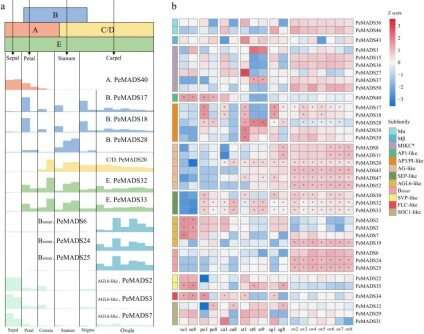This article has been reviewed according to Science X's editorial process and policies. Editors have highlighted the following attributes while ensuring the content's credibility:
fact-checked
trusted source
proofread
Study of MADS-box genes in passion fruit illuminates plant organ development and stress responses

Passion fruit (Passiflora edulis), renowned for its nutritional richness and aromatic fruits, is widely cultivated in tropical and subtropical regions. Passion fruit can not only be harvested year-round but also can be used as a horticultural plant, which contributes significantly to its economic value.
In addition, its special floral structure makes it an excellent and unique plant model for investigating floral organ morphology. The MADS-box gene family, essential in plant growth and development, plays a pivotal role in various biological processes, including floral organ morphology. Although extensive research has been carried out on members of the MADS-box gene family in various plants, a comprehensive investigation of MADS-box gene family members in passion fruit has not yet been reported.
Tropical Plants published research titled "From gene expression to flower patterns: genome-wide characterization of the MADS-box gene family in passion fruit (Passiflora edulis)" on 20 February 2024.
In this study, researchers combined hidden Markov model (HMM) and BLAST search to identify 52 members of the MADS-box gene family, designated as PeMADS1-PeMADS51 based on their sequential positions on the chromosomes, while a single member mapped to a contig was named PeMADS52. These genes displayed variable protein lengths and molecular weights, with isoelectric points ranging from acidic to basic.
The stability, aliphatic index, and hydropathicity analyses suggested varied thermal stability and hydrophobicity among the proteins. The prediction of subcellular localization reveals that PeMADS proteins were mainly localized in the nucleus, chloroplasts, and mitochondria. Sequence alignment and 3D structural modeling revealed a highly conserved MADS-domain from 52 PeMADS proteins.
Phylogenetic analysis further classified 52 MADS-box genes into two types with five subgroups (type I: Mα, Mβ, Mγ; type II: MIKCC, MIKC*). The structural analysis illustrated that PeMADS proteins within the same subfamily are relatively conserved. The examination of cis-regulatory elements revealed insights into the genes' responses to light, hormones, and stress, emphasizing their regulatory versatility.
Chromosomal mapping and synteny analyses highlighted the gene family's evolutionary trajectory, with evidence of duplication events contributing to its expansion and diversification.
Notably, researchers proposed an ABC(D)E model to elucidate the regulation of the unique floral structure (sepal-petal-corona-stamen-carpel) in passion fruit. Expression pattern analyses in floral tissues suggested the involvement of specific PeMADS genes in implementing the ABC(D)E model of floral organ identity.
The distinct coronas were predominately controlled by B-, C(D)- and E-class genes, supporting the speculation that the corona might have originated from stamens. Many PeMADS genes were also involved in the development regulation of non-floral organ development and stress responses. The study's findings on temperature and phytohormone responsiveness underscore the gene family's adaptability to environmental stimuli.
Overall, this work establishes a foundational understanding of the MADS-box gene family in passion fruit, offering insights into their evolutionary history, structural characteristics, and functional roles in both floral and non-floral organ development, paving the way for future functional characterizations.
More information: Chang An et al, From gene expression to flower patterns: genome-wide characterization of the MADS-box gene family in passion fruit (Passiflora edulis), Tropical Plants (2024). DOI: 10.48130/tp-0024-0004
Provided by Chinese Academy of Sciences





















